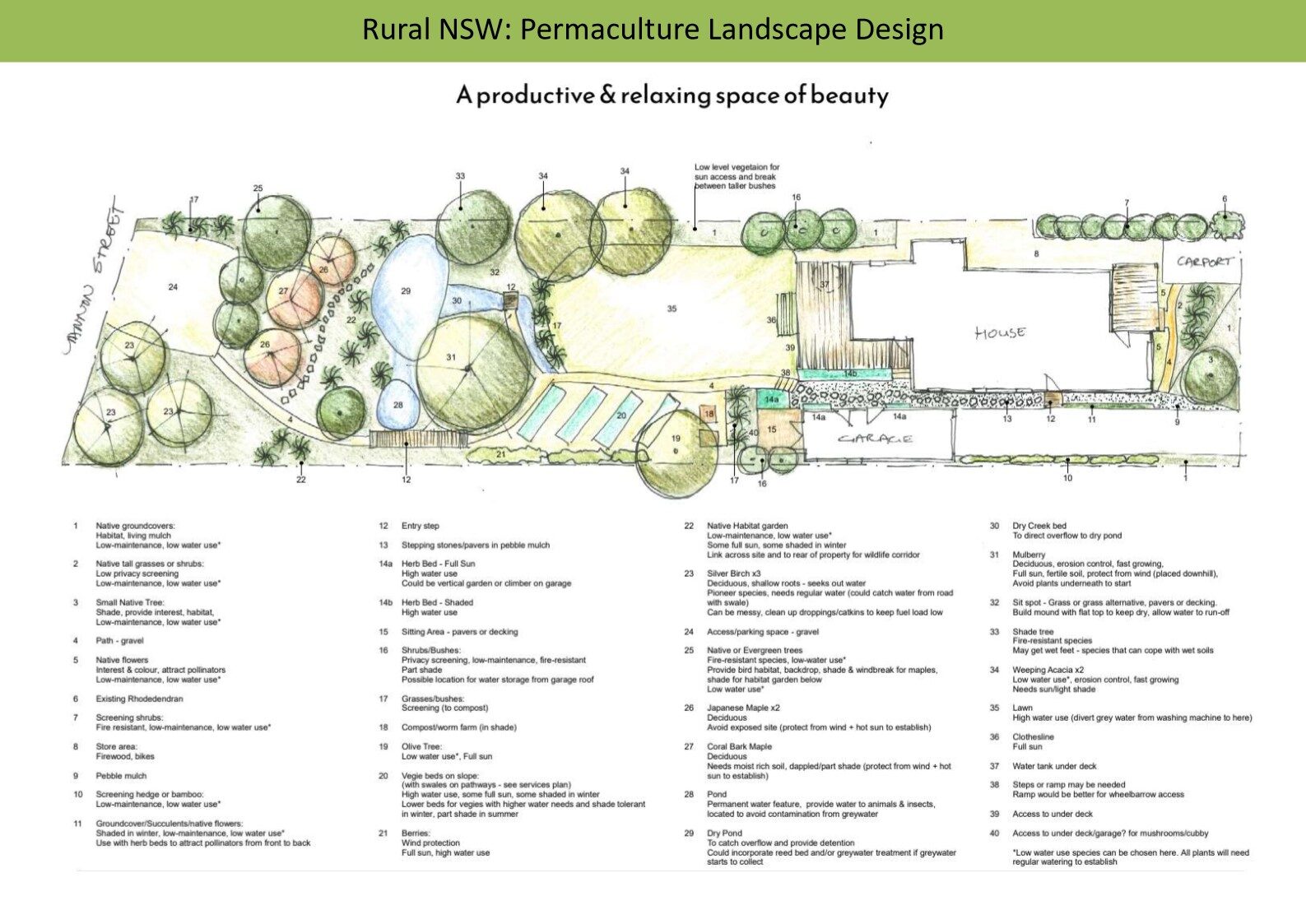In 2020 we put our name down on the list of Architect’s Assist, which offered pro-bono and discounted fees to people affected by the 2019/2020 bushfires. I decided to offer permaculture designs for free or a very small fee to help anyone interested in Permaculture solutions.
One family in Batlow NSW got in contact and we worked together to come up with a Permaculture landscape plan that worked with their house renovations that had already begun. Recently the family got in contact to show that plantings were growing and frogs were multiplying on their property. It’s a joy to watch designs unfold in this way.
It made me think, that in my involvement with Permaculture has reminded me that nothing is static and that our lives and environments are ever-changing. Seeing a permaculture garden evolve is part of a design process (feedback loops, observe & interact), and the fact that vegetation doesn’t get planted fully grown and stay that way, it therefore can’t be static. Even if you put in a mature tree, it will adapt to the new conditions (or die), it will link into it’s surroundings and become part of an eco-system.
A garden is unlike architecture, which is built with definitive materials, drawn to exact specifications, designed to be still, embedded, secure and for the most part, unchanging for many years. It doesn’t necessarily allow us to grow and evolve, the way the permaculture encourages us to. Perhaps this has brought lessons to my architectural practice, how to design for change (such as ageing-in-place), certainly how we should design for resilience*, and accept that nothing is static.
*by resilience I mean as individuals and a species on a planet with changing climates, rather than the resilience/durability of materials, as they have their limits…


